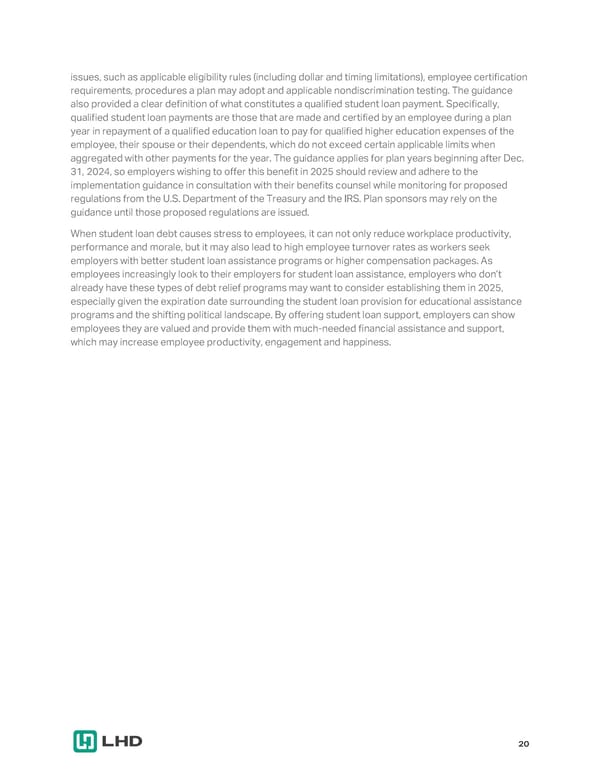issues, such as applicable eligibility rules (including dollar and timing limitations), employee certification requirements, procedures a plan may adopt and applicable nondiscrimination testing. The guidance also provided a clear definition of what constitutes a qualified student loan payment. Specifically, qualified student loan payments are those that are made and certified by an employee during a plan year in repayment of a qualified education loan to pay for qualified higher education expenses of the employee, their spouse or their dependents, which do not exceed certain applicable limits when aggregated with other payments for the year. The guidance applies for plan years beginning after Dec. 31, 2024, so employers wishing to offer this benefit in 2025 should review and adhere to the implementation guidance in consultation with their benefits counsel while monitoring for proposed regulations from the U.S. Department of the Treasury and the IRS. Plan sponsors may rely on the guidance until those proposed regulations are issued. When student loan debt causes stress to employees, it can not only reduce workplace productivity, performance and morale, but it may also lead to high employee turnover rates as workers seek employers with better student loan assistance programs or higher compensation packages. As employees increasingly look to their employers for student loan assistance, employers who don’t already have these types of debt relief programs may want to consider establishing them in 2025, especially given the expiration date surrounding the student loan provision for educational assistance programs and the shifting political landscape. By offering student loan support, employers can show employees they are valued and provide them with much-needed financial assistance and support, which may increase employee productivity, engagement and happiness. 20
 2025 Employee Benefits Market Outlook Page 19 Page 21
2025 Employee Benefits Market Outlook Page 19 Page 21